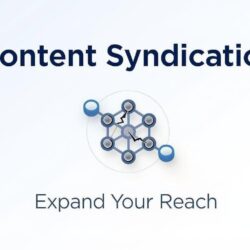A B2B SEO Strategy is no longer just a marketing tool—it is a revenue engine. In a competitive digital ecosystem, where every brand vies for attention, a well-structured and scalable SEO framework can transform organic visibility into measurable profit. The success of a B2B SEO Strategy lies in its ability to connect technical precision with business goals, ensuring every optimization effort drives conversions, not just traffic.
Unlike B2C campaigns, B2B SEO focuses on building relationships, nurturing leads, and positioning a brand as an authority in its niche. To build profitability, organizations must go beyond surface-level keyword rankings and create a framework that aligns SEO metrics with revenue outcomes.
Step 1: Establish a Strategic SEO Vision
Every profitable B2B SEO Strategy begins with a clear vision. This vision defines the purpose behind optimization efforts and ensures every decision supports long-term business growth.
Start by aligning SEO objectives with corporate goals. If your business aims to increase inbound qualified leads by 30% within six months, SEO should directly contribute to that outcome. Create an internal roadmap that connects search visibility to sales pipeline metrics, such as lead quality, conversion rate, and customer lifetime value.
A strategic vision also demands stakeholder alignment. When marketing, content, and sales teams work collaboratively toward shared SEO goals, profitability follows naturally.
Step 2: Understand Buyer Intent with Precision
Profitability in B2B SEO depends on how well you understand buyer intent. Each keyword reflects a user’s journey—from awareness to decision. Successful SEO frameworks categorize intent-driven keywords to ensure content addresses every stage of the funnel.
-
Informational Intent: Early-stage queries where prospects seek education.
-
Comparative Intent: Mid-stage searches evaluating multiple vendors or solutions.
-
Transactional Intent: Late-stage searches with purchase-ready signals.
By mapping keywords to buyer intent, marketers ensure their B2B SEO Strategy drives the right audience to the right content at the right time. This precision not only increases engagement but also accelerates conversions.
Step 3: Develop a Conversion-Oriented Content Framework
High-performing B2B SEO frameworks are powered by content that educates, influences, and converts. Profit-driven SEO requires a structured approach to content creation that integrates thought leadership, keyword optimization, and storytelling.
Develop a content architecture that includes:
-
Pillar Pages: Comprehensive resources covering major industry themes.
-
Cluster Pages: Supporting content linking to the main pillar for SEO depth.
-
Sales Enablement Assets: Case studies, product sheets, and comparison guides that assist decision-makers.
Optimize all content for SEO by incorporating the target keyword naturally within headers, subheaders, and metadata. Use analytics to measure performance and update older posts with new statistics or case studies. This consistent refinement maximizes SEO profitability.
Step 4: Build a Data-Driven Keyword Strategy
Keyword selection determines the profitability of a B2B SEO Strategy. Rather than chasing high-volume keywords, focus on those with high commercial intent and conversion potential.
Leverage tools like SEMrush, Ahrefs, and Google Search Console to analyze:
-
Keyword difficulty and search volume.
-
Cost-per-click metrics to estimate competition value.
-
Long-tail variations aligned with buyer pain points.
Cluster related keywords into topic groups to create stronger thematic authority. This structure enables internal linking and signals topical depth to search engines, improving rankings and traffic quality.
Step 5: Strengthen Technical SEO for Scalable Growth
Profitability is impossible without a technically sound website. Technical SEO ensures that your site performs efficiently for both users and search engines.
Audit your website regularly to identify and correct performance issues, including crawl errors, broken links, duplicate content, and slow-loading pages. Implement HTTPS for security, optimize for Core Web Vitals, and create a clean URL structure.
A technically optimized site improves user experience, reduces bounce rates, and boosts rankings—all of which contribute directly to higher lead generation and revenue outcomes.
Step 6: Integrate On-Page Optimization with Conversion Tactics
On-page SEO and conversion optimization go hand in hand. Effective on-page optimization ensures that content is not only discoverable but also persuasive.
Use the keyword strategically in title tags, meta descriptions, and H1 headings. Incorporate compelling CTAs (Call-to-Actions) throughout the content that encourage users to download resources, schedule demos, or contact sales.
Ensure that every landing page has a clear value proposition. Use testimonials, statistics, and case studies to reinforce credibility. When search optimization aligns with conversion strategy, every organic visit becomes a potential revenue opportunity.
Step 7: Build Authoritative Backlinks for Brand Trust
Backlinks are critical for establishing domain authority and improving organic rankings. However, in a B2B context, quality matters more than quantity.
Secure backlinks from high-authority, industry-specific websites. This can be achieved through guest blogging, digital PR campaigns, and co-authored research reports. Participate in thought leadership events and create data-driven studies that others naturally reference.
Each high-quality backlink signals credibility to search engines and enhances brand trust, which directly influences click-through rates and lead quality.
Step 8: Use Analytics for Continuous Optimization
A profitable B2B SEO Strategy thrives on data. Tracking performance metrics enables marketers to understand what is working and where optimization is needed.
Key performance indicators to monitor include:
-
Organic traffic and user engagement.
-
Keyword ranking improvements.
-
Bounce rate and average session duration.
-
Conversion rates from organic channels.
Use these insights to refine content, update target keywords, and enhance UX design. Profitability increases when SEO becomes a continuous cycle of testing, learning, and improving.
Step 9: Integrate SEO with ABM and Demand Generation
SEO is most effective when integrated with other marketing strategies like Account-Based Marketing (ABM) and Demand Generation. By aligning keyword insights with account-level data, marketers can identify high-value prospects and deliver personalized experiences.
For instance, if analytics reveal that decision-makers from the tech industry frequently visit specific landing pages, create targeted SEO campaigns tailored to their needs. Integrating SEO with ABM ensures that organic traffic not only increases but converts into high-quality leads that contribute directly to revenue.
Step 10: Scale for Future Growth
Scalability is the hallmark of a profitable B2B SEO Strategy. As your business expands, so should your SEO infrastructure. Automate repetitive tasks like keyword monitoring, reporting, and backlink tracking.
Invest in AI-driven tools that analyze user intent patterns and predict emerging trends. Create scalable processes for content production and technical optimization. Continuous innovation ensures your SEO strategy evolves with search algorithms and buyer behaviors, maintaining profitability over time.
Building a Revenue-Focused SEO Culture
Profit-driven SEO is not a one-time project—it is an organizational mindset. By building collaboration between marketing, sales, and analytics teams, companies can turn SEO from a marketing expense into a revenue-producing engine.
An optimized B2B SEO Strategy nurtures trust, strengthens brand authority, and generates leads that convert into long-term customers. With consistency, data, and creativity, SEO becomes a measurable path to sustained profitability.
About Us
Acceligize is a global B2B demand-generation and technology marketing firm specializing in performance-driven lead generation solutions. Their services include content syndication, account-based marketing, intent and install-based targeting, and custom campaign strategies. Leveraging data science, technology, and human intelligence, Acceligize helps clients reach high-quality audiences and drive conversions across the full marketing funnel.




